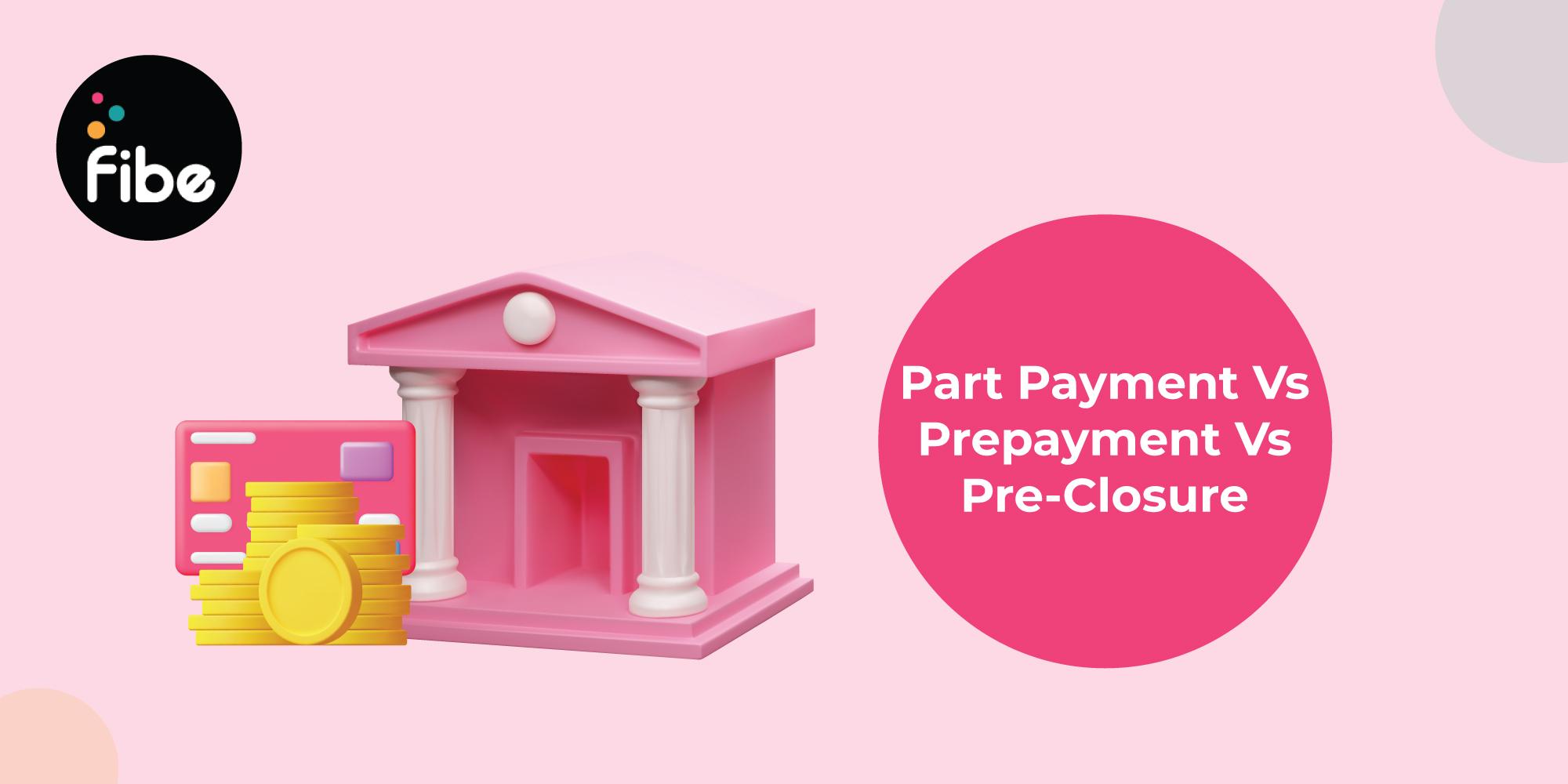- Home
- Blogs
- Personal Loan
- What Is Prepayment Preclosure And Partpayment
Prepayment, Pre-Closure and Part Payment: Everything you need to know
Reviewed by: Fibe Research Team
- Updated on: 10 Jan 2024
Reviewed by: Fibe Research Team

Making a part payment of a personal loan or choosing any of the other prepayment options offers many benefits. It reduces your interest burden and makes you credit-free early. You can choose the right option to increase your savings by understanding how they differ.
Read on to learn the difference between these loan repayment methods.
Part-payment, as the name suggests, means repaying a part of the total loan amount when you have idle funds. This reduces the outstanding balance; hence, your EMIs and interest amount also decrease.
Consider the following example:
Say you get surplus funds and plan to make a part payment of a personal loan of ₹5 lakhs after 2 years. Then, the interest and EMI will be calculated on the remaining ₹5 lakhs for 3 years. This helps decrease your interest outgo and minimise your borrowing costs for the remaining loan tenure.
Prepaying your loan is also called foreclosing. It refers to when you repay the entire loan before the loan tenure ends. Usually, financial companies allow borrowers to fully prepay the principal amount after the first year of repayment.
The prepayment of a loan can be beneficial as you save on interest. Consider the following scenario:
Here’s what you’ll need to pay:
In the aforementioned hypothetical example, prepaying the entire loan will save you approximately ₹57,422 as interest.
The option of pepaying the outstanding amount in a single instalment before the loan term ends is what this means. You can reduce your interest liability and close your loan account before the term, helping you save additional funds.
The financial institution will calculate the balance after considering the following parameters:
Remember to collect the ‘No-dues’ certificate after the pre-closure of a personal loan as well as the original documents from the financial institution.
Consider the following situation:
Check out this table to understand how these prepayment methods differ:
| Parameter | Part Payment of a Loan | Prepayment of a Loan | Pre-closure of a Loan |
|---|---|---|---|
| Principle loan amount | The principal amount of your loan reduces | The principal amount of your loan reduces | Repayment of the entire outstanding loan amount |
| EMI | The EMI payment will decrease | The EMI payment will decrease | No EMIs since the entire loan amount is paid off |
| Interest rate | Remains the same | Reduces | The rate of interest remains the same, but you do not need to pay any interest since the entire loan amount is paid off |
Before making a loan prepayment, note the following criteria:
By understanding these practices of prepaying loans, you can service your debt easily and manage your finances effectively. Try to plan for prepayment right when you are applying for a personal loan.
With Fibe’s Instant Cash Loan, you can get up to ₹5 lakhs at affordable rates and zero pre-closure charges. Download the Personal Loan App or log in to our website today to get the required funds with ease!
Here’s how these financial terms differ:
Yes, these terms can be used interchangeably since, in both cases, you repay the borrowed amount as a lump sum and close your loan account early. This helps you save on interest charges. However, you should only proceed after factoring in the fees levied by the financial institution.
Here’s how:
It can be beneficial for you to pre-close a loan since it:
Remember, you must consider this option only when you have surplus funds and do not deplete all your emergency funds.